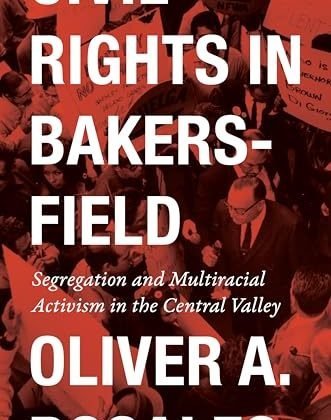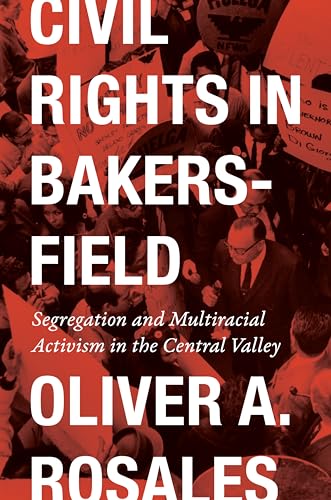

Oliver A. Rosales is Professor of History at Bakersfield College. This interview is based on his new book, Civil Rights in Bakersfield: Segregation and Multiracial Activism in the Central Valley (University of Texas Press, 2024).
JF: What led you to write Civil Rights in Bakersfield?
OR: I think I wrote Civil Rights in Bakersfield because I was both inspired and slightly disturbed by how the Central Valley of California was being discussed by U.S. historians the past two decades. Having been born and raised in Bakersfield, the home of Buck Owens, Merle Haggard, and the farm worker movement, and with deep family roots in the region dating back to the nineteenth century, I knew there was something missing regarding the ways historians discussed the Central Valley when it came to migration, culture, labor, and civil rights. My book is an intervention into an existing historiography of a multiracial California and helps us think in new ways about the importance of civil rights coalitions and resistance in the American Far West.
JF: In 2 sentences, what is the argument Civil Rights in Bakersfield?
OR: Civil rights coalitions between Black and Brown activists pushed for reform in greater Bakersfield in the decades following World War II, well beyond issues of farm labor. Activists encountered stiff resistance from racial and political conservatives who benefited from long-standing traditions of segregation in California’s Central Valley.
JF: Why do we need to read Civil Rights in Bakersfield?
OR: It’s important to understand the civil rights movement from a continental perspective in the United States, especially outside the American South. California’s civil rights movement was multiracial. It’s also important to understand the impact of Cesar Chavez and the farm worker movement on American labor and civil rights history. Importantly, my book narrates a civil rights history beyond issues of farm labor in the place where the farm worker movement was born.
JF: Why and when did you become an American historian?
OR: I think Oliver Rink, who was a long-time professor at California State University, Bakersfield and taught colonial North American history inspired me to become a professional historian. He was an amazing lecturer. As a relatively impoverished MA student, I had no problem buying him a cup of coffee before class to help ensure his enthusiasm and pep during lecture. I still have all my notes from his classes. My first love was definitely 17th century New England, but I couldn’t imagine myself research and writing about Puritans and their descendants, as interesting as the topic was for me at the time. Just before I entered graduate school at CSU, I remember graduating from Berkeley and coming home to Bakersfield not quite knowing what I wanted to do. I remember attending a meeting at the Board of Trustees for the Kern Community College District where my father taught history and was an administrative dean for decades. This must have been around 2003. There were a large gathering of students and community people in the audience, both Black and Brown faces especially. The college administration had recently moved to shutter the Chicano Cultural and Martin Luther King, Jr. Centers. These had been important spaces for Black and Brown students and community groups for years. As speaker after speaker took the podium to discuss the importance of these centers since the civil rights era, the entire scene reminded me of the campus protests I had watched as an undergraduate in Berkeley. I wanted to know more. I enrolled in graduate school at the local CSU and my first seminar paper was researching the origin of these centers in Bakersfield. Along the way, I did some great local oral histories that served as my entry point into studying the diverse history of civil rights reform in Bakersfield. Later, as a PhD Candidate at UC Santa Barbara, I traveled across America and well outside California to research civil rights history in Bakersfield at various archives, including Wayne State and Yale Universities, as well as the national archives. I was lucky enough to land a tenure track position in history at Bakersfield College, the place where I am from and where my research is focused. t’s truly a joy to embed local histories for my students when I teach Chicano/a, California, and U.S. history. And the rest they say, is history!
JF: What is your next project?
OR: Landmarks in American History and Culture grant from the NEH, thus I’ll have a chance to host 72 K-12 teachers from across America who will travel to Bakersfield to learn about the region’s farm labor history in Summer 2025. I am also focused on consulting with the National Parks Service and National Chavez Center for the construction of a new bilingual exhibit at the national monument in Keene, California, where Cesar Chavez is buried. The exhibit is scheduled to be completed in 2027, the 100-year anniversary of the birth of Cesar Chavez.
JF: Thanks, Oliver!